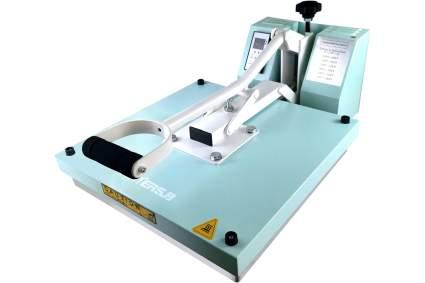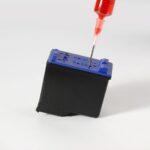In the ever-evolving world of garment decoration, T-shirt press machines have emerged as a game-changer, revolutionizing the way we print designs on apparel. These machines have become indispensable tools for businesses, hobbyists, and artists alike, providing a seamless and efficient method for transferring intricate designs onto T-shirts and other fabric items. This article explores the anatomy, functionality, and diverse applications of T-shirt press machines.
Anatomy of a T-Shirt Press Machine
T-shirt press machine, also known as heat press machines, consist of several key components designed to work together in harmony:
-
Heat Platen:
- The heat platen is the flat, heated surface where the T-shirt or garment is placed for printing.
- It comes in various sizes to accommodate different garment sizes and shapes.
-
Heating Element:
- This is the component responsible for generating and maintaining the heat required for the transfer process.
- Heating elements can be made of different materials, such as aluminum or ceramic.
-
Temperature Control:
- T-shirt press machines are equipped with temperature controls, allowing users to set and regulate the heat according to the fabric and transfer material requirements.
-
Pressure Adjustment:
- The pressure exerted during the transfer process is crucial for achieving a quality print. T-shirt press machines allow users to adjust the pressure to accommodate different fabrics and transfer materials.
-
Timer:
- The timer ensures that the garment is exposed to heat for the correct duration, preventing overexposure or underexposure during the transfer process.
Functionality
The functionality of a T-shirt press machine can be summarized in a few simple steps:
-
Preparation:
- Design a digital image or choose a pre-existing one.
- Print the design on transfer paper using compatible ink.
-
Setup:
- Preheat the press to the required temperature.
- Place the T-shirt on the heat platen, ensuring it is smooth and free of wrinkles.
-
Transfer:
- Position the transfer paper with the printed design onto the garment.
- Close the heat press, applying the necessary pressure.
- Activate the timer to control the duration of the heat transfer.
-
Completion:
- Once the timer reaches zero, lift the heat platen.
- Remove the transfer paper, revealing the printed design on the T-shirt.
Applications
T-shirt press machines find applications across various industries and purposes:
-
Apparel Businesses:
- Custom T-shirt printing businesses utilize press machines for mass production of personalized garments.
-
DIY Enthusiasts:
- Hobbyists and individuals passionate about crafting use T-shirt press machines to create unique designs at home.
-
Promotional Products:
- Companies use these machines to produce branded merchandise, such as T-shirts, tote bags, and hats for promotional purposes.
-
Event Merchandising:
- T-shirt press machines are employed at events like concerts and festivals to create on-the-spot custom merchandise for attendees.
Conclusion
T-shirt press machines have evolved into indispensable tools, bridging the gap between creativity and customization in the world of garment decoration. Whether you’re running a business, expressing your artistic flair, or promoting a brand, these machines offer a versatile and efficient solution for turning ideas into tangible, wearable art. As technology continues to advance, the future of T-shirt press machines holds exciting possibilities, promising further improvements in precision, speed, and user-friendly features.



